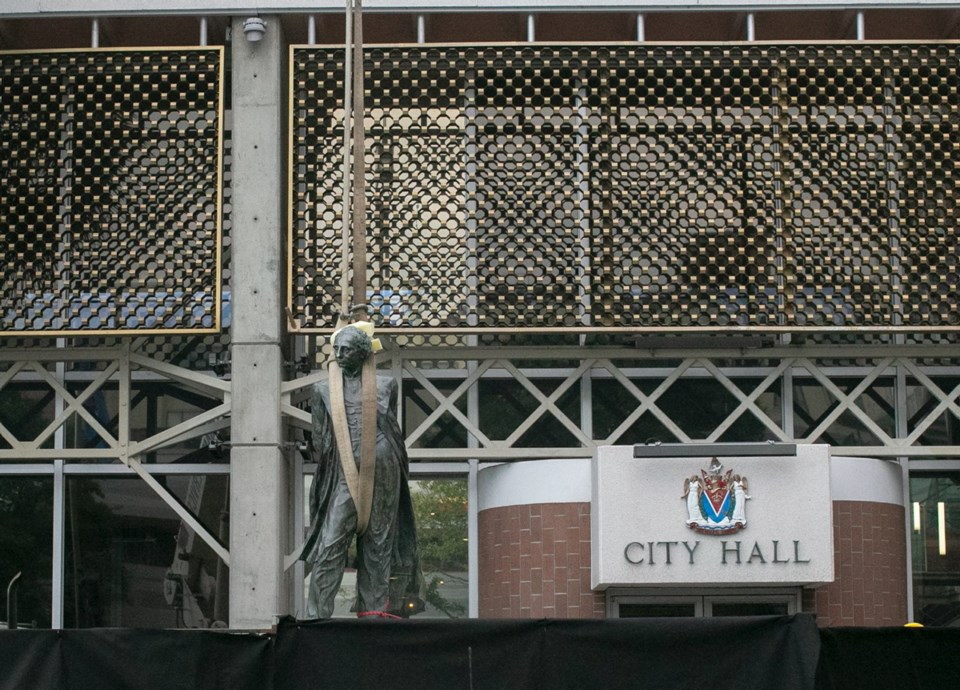A couple of hundred people grappled with the complicated legacy of Sir John A. Macdonald in a city-hosted reconciliation event Monday evening.
The event was sparked by the 2018 removal of a statue of Canada’s first prime minister outside Victoria City Hall because of his role in shaping residential schools and the Chinese head tax and his promotion of an Aryan race.
Actors played out a fictional debate over the statue’s removal, highlighting both the work Macdonald did to shape the country’s democracy and the harm he helped to inflict on Indigenous people.
“It’s revenge.”
“John did some good things.”
“Our history is complicated.”
“Reconciliation is not as simple as that.”
“Do you have any national pride?”
John A. Macdonald himself made an appearance, defending himself against those judging his legacy in the present day and wondering how he would be remembered.
The role-play culminated in an apology from Macdonald.
“I’m sorry,” he said to a speaker who identified herself only as someone who had never mattered to Macdonald.
“No you’re not,” she replied.
“No. I’m not,” Macdonald said softly. “I loved my country.”
First Nations child welfare advocate Cindy Blackstock travelled from Ottawa to join Mayor Lisa Helps in facilitating the evening’s discussion.
Blackstock has previously addressed the question of how to handle complicated historical figures, helping to add plaques in an Ottawa cemetery acknowledging both the good and harm done by leaders throughout the country’s history.
She said it’s important to make space for both sides, to avoid reducing figures such as Macdonald into one-dimensional “evil-doers.”
“We have to keep their humanity in full view,” she said. “We have to also look at what drove them to make certain decisions.”
The audience was asked to consider the impact of the statue on those who were hurt by Macdonald’s legacy.
At one table, a small group discussed their thoughts on how to handle the statue.
Participant Alice Whitehead said that it would be painful to walk pass the statue to enter city hall and it should be put in another location.
“Would it still hurt if it had a plaque with the good and the bad? How else can you learn?” Joyce Nordwall asked.
Although Helps said the purpose of the evening was not to decide the future of the statue, she acknowledged that it was important to find an appropriate home for it.
As Canada’s first prime minister and an MP for Victoria from 1878 to 1882, Macdonald shaped the country’s democracy, but was also an architect of the residential-schools system that removed Indigenous children from their families and sent them to church-run boarding schools, where they lost their culture and language.
The statue’s removal from its city hall location sparked protests. Helps said Monday that the removal came after a year of consultation with the Songhees and Esquimalt nations.
In a final question to the audience, everyone was asked to consider how they could address the injustices of Macdonald’s legacy.
“If you can’t think of anything, go down to the legislature and sit with the youth [protesting],” Blackstock said.



